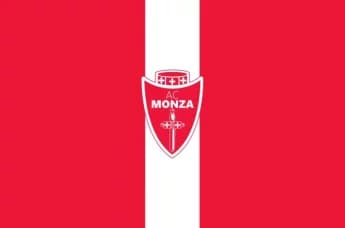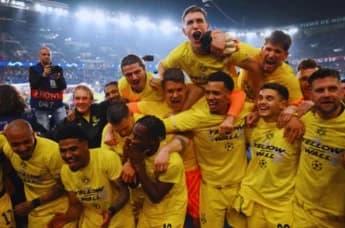From its historic roots to its modern ambitions, VfB Stuttgart stands as a symbol of German football’s rich heritage, driven by a commitment to youth development, passionate fan support, and a relentless pursuit of success.
Introduction
VfB Stuttgart is one of Germany’s most storied football clubs, with a history that intertwines with the very fabric of the nation’s footballing culture. Founded in 1893, the club has experienced the highs of Bundesliga titles and European adventures, as well as the lows of relegation battles and financial struggles. Yet, through it all, Stuttgart has remained a beacon of resilience, innovation, and community spirit. Nestled in the heart of Baden-Württemberg, the club has not only shaped German football but also become a cornerstone of its local identity, driven by a loyal fanbase and a commitment to nurturing young talent.
A Rich History: Foundations and Early Success
VfB Stuttgart’s origins trace back to the late 19th century when English expatriates introduced rugby and football to the region. The club was officially formed in 1912 through the merger of Stuttgarter FV and FC Krone Cannstatt, two teams rooted in the middle-class sporting culture of the time. From its early days, Stuttgart embraced football as its primary focus, quickly rising through the ranks of regional competitions.
The club’s first major successes came in the 1930s and 1940s, during which it dominated the Gauliga Württemberg, a top-flight division under the Third Reich’s restructuring of German football. Stuttgart won multiple Gauliga titles and made its mark on the national stage, reaching the German championship final in 1935. Although they fell short against Schalke 04, this period laid the foundation for the club’s future ambitions.
The Golden Era: Post-War Dominance
The 1950s marked a golden era for VfB Stuttgart. Competing in the Oberliga Süd, the club won three league titles and claimed two German championships in 1950 and 1952. This period also saw Stuttgart lift the DFB-Pokal twice, in 1954 and 1958, cementing its status as one of Germany’s premier clubs. The team was led by inspirational figures like Robert Schlienz, who continued to play despite losing his left arm in a car accident, embodying the club’s fighting spirit.
Despite these successes, Stuttgart’s players were notably absent from the West German squad that triumphed at the 1954 FIFA World Cup, a curious omission given the club’s domestic dominance. Nevertheless, this era remains a cherished chapter in Stuttgart’s history, showcasing the club’s ability to compete at the highest level.
Bundesliga Founding Member and European Adventures
When the Bundesliga was established in 1963, VfB Stuttgart was among its 16 founding members. However, the club’s cautious financial approach and reliance on part-time players limited its ability to challenge for titles in the league’s early years. Despite this, Stuttgart remained a consistent presence in the top flight, with occasional flashes of brilliance, such as their run to the UEFA Cup semi-finals in 1974.
The 1980s and 1990s brought renewed success. Under coach Helmut Benthaus, Stuttgart won its first Bundesliga title in 1984, followed by another in 1992 in one of the closest title races in German football history. The club also made significant strides in European competitions, reaching the UEFA Cup final in 1989 and the UEFA Cup Winners’ Cup final in 1998. Although they fell short on both occasions, these achievements underscored Stuttgart’s growing reputation on the continental stage.
Challenges and Resilience: Relegation and Rebuilding
The turn of the millennium brought turbulent times for VfB Stuttgart. Financial mismanagement and inconsistent performances led to relegation in 2016, a bitter blow for a club of its stature. However, Stuttgart demonstrated its resilience by securing immediate promotion the following season. This pattern repeated in 2019, when another relegation was followed by a swift return to the Bundesliga in 2020.
Throughout these challenges, the club remained committed to its philosophy of developing young talent. Players like Sami Khedira, Mario Gómez, and Timo Werner emerged from Stuttgart’s renowned youth academy, showcasing the club’s ability to produce world-class talent even during difficult periods.
The Modern Era: A New Dawn
In recent years, VfB Stuttgart has focused on rebuilding and stabilizing its position in the Bundesliga. The club has embraced a modern, attacking style of play, blending experienced leaders with promising young stars. Strategic recruitment and financial prudence have been key to this resurgence, as Stuttgart aims to avoid the pitfalls of the past.
The Mercedes-Benz Arena, the club’s iconic home ground, continues to be a fortress of support, with fans filling the stands to create an electrifying atmosphere. Stuttgart’s passionate fanbase remains the lifeblood of the club, standing by their team through thick and thin.
Youth Development: The Heart of Stuttgart’s Philosophy
One of VfB Stuttgart’s defining characteristics is its commitment to youth development. The club’s academy is widely regarded as one of the best in Germany, producing a steady stream of talent that has gone on to shine at both club and international levels. Players like Joshua Kimmich, Serge Gnabry, and Benjamin Pavard are a testament to the academy’s success.
Stuttgart’s focus on nurturing young talent not only ensures a pipeline of future stars but also aligns with the club’s financial sustainability goals. By developing and selling players, the club can reinvest in its squad and infrastructure, creating a cycle of growth and success.
Rivalries and Key Matches
VfB Stuttgart’s history is punctuated by intense rivalries and memorable matches. The Baden-Württemberg derby against Karlsruher SC is one of the most fiercely contested fixtures in German football, while clashes with Bayern Munich and Borussia Dortmund have produced some of the Bundesliga’s most thrilling encounters.
One of the club’s most iconic moments came in the 2006-07 season, when a young Stuttgart side, led by Mario Gómez and Sami Khedira, clinched the Bundesliga title dramatically. This triumph remains a source of pride for Stuttgart fans and a reminder of the club’s potential to compete with Germany’s elite.
The Future: Ambitions and Aspirations
As VfB Stuttgart looks to the future, the club is focused on achieving long-term stability and success. Key priorities include strengthening the squad, modernizing infrastructure, and maintaining financial discipline. The club also aims to return to European competitions, where it can once again showcase its talent on a continental stage.
Beyond football, Stuttgart remains deeply committed to its community. Initiatives like "VfBfairplay" highlight the club’s dedication to social responsibility, using football as a force for positive change. By staying true to its values and embracing innovation, VfB Stuttgart is poised to build on its rich legacy and create new chapters of success.
Conclusion
VfB Stuttgart is more than just a football club; it is a symbol of resilience, passion, and community. From its historic triumphs to its modern-day ambitions, the club has consistently demonstrated its ability to adapt and thrive. With a loyal fanbase, a world-class youth academy, and a clear vision for the future, VfB Stuttgart continues to embody the spirit of German football, ensuring its legacy endures for generations to come.
Introduction
VfB Stuttgart is one of Germany’s most storied football clubs, with a history that intertwines with the very fabric of the nation’s footballing culture. Founded in 1893, the club has experienced the highs of Bundesliga titles and European adventures, as well as the lows of relegation battles and financial struggles. Yet, through it all, Stuttgart has remained a beacon of resilience, innovation, and community spirit. Nestled in the heart of Baden-Württemberg, the club has not only shaped German football but also become a cornerstone of its local identity, driven by a loyal fanbase and a commitment to nurturing young talent.
A Rich History: Foundations and Early Success
VfB Stuttgart’s origins trace back to the late 19th century when English expatriates introduced rugby and football to the region. The club was officially formed in 1912 through the merger of Stuttgarter FV and FC Krone Cannstatt, two teams rooted in the middle-class sporting culture of the time. From its early days, Stuttgart embraced football as its primary focus, quickly rising through the ranks of regional competitions.
The club’s first major successes came in the 1930s and 1940s, during which it dominated the Gauliga Württemberg, a top-flight division under the Third Reich’s restructuring of German football. Stuttgart won multiple Gauliga titles and made its mark on the national stage, reaching the German championship final in 1935. Although they fell short against Schalke 04, this period laid the foundation for the club’s future ambitions.
The Golden Era: Post-War Dominance
The 1950s marked a golden era for VfB Stuttgart. Competing in the Oberliga Süd, the club won three league titles and claimed two German championships in 1950 and 1952. This period also saw Stuttgart lift the DFB-Pokal twice, in 1954 and 1958, cementing its status as one of Germany’s premier clubs. The team was led by inspirational figures like Robert Schlienz, who continued to play despite losing his left arm in a car accident, embodying the club’s fighting spirit.
Despite these successes, Stuttgart’s players were notably absent from the West German squad that triumphed at the 1954 FIFA World Cup, a curious omission given the club’s domestic dominance. Nevertheless, this era remains a cherished chapter in Stuttgart’s history, showcasing the club’s ability to compete at the highest level.
Bundesliga Founding Member and European Adventures
When the Bundesliga was established in 1963, VfB Stuttgart was among its 16 founding members. However, the club’s cautious financial approach and reliance on part-time players limited its ability to challenge for titles in the league’s early years. Despite this, Stuttgart remained a consistent presence in the top flight, with occasional flashes of brilliance, such as their run to the UEFA Cup semi-finals in 1974.
The 1980s and 1990s brought renewed success. Under coach Helmut Benthaus, Stuttgart won its first Bundesliga title in 1984, followed by another in 1992 in one of the closest title races in German football history. The club also made significant strides in European competitions, reaching the UEFA Cup final in 1989 and the UEFA Cup Winners’ Cup final in 1998. Although they fell short on both occasions, these achievements underscored Stuttgart’s growing reputation on the continental stage.
Challenges and Resilience: Relegation and Rebuilding
The turn of the millennium brought turbulent times for VfB Stuttgart. Financial mismanagement and inconsistent performances led to relegation in 2016, a bitter blow for a club of its stature. However, Stuttgart demonstrated its resilience by securing immediate promotion the following season. This pattern repeated in 2019, when another relegation was followed by a swift return to the Bundesliga in 2020.
Throughout these challenges, the club remained committed to its philosophy of developing young talent. Players like Sami Khedira, Mario Gómez, and Timo Werner emerged from Stuttgart’s renowned youth academy, showcasing the club’s ability to produce world-class talent even during difficult periods.
The Modern Era: A New Dawn
In recent years, VfB Stuttgart has focused on rebuilding and stabilizing its position in the Bundesliga. The club has embraced a modern, attacking style of play, blending experienced leaders with promising young stars. Strategic recruitment and financial prudence have been key to this resurgence, as Stuttgart aims to avoid the pitfalls of the past.
The Mercedes-Benz Arena, the club’s iconic home ground, continues to be a fortress of support, with fans filling the stands to create an electrifying atmosphere. Stuttgart’s passionate fanbase remains the lifeblood of the club, standing by their team through thick and thin.
Youth Development: The Heart of Stuttgart’s Philosophy
One of VfB Stuttgart’s defining characteristics is its commitment to youth development. The club’s academy is widely regarded as one of the best in Germany, producing a steady stream of talent that has gone on to shine at both club and international levels. Players like Joshua Kimmich, Serge Gnabry, and Benjamin Pavard are a testament to the academy’s success.
Stuttgart’s focus on nurturing young talent not only ensures a pipeline of future stars but also aligns with the club’s financial sustainability goals. By developing and selling players, the club can reinvest in its squad and infrastructure, creating a cycle of growth and success.
Rivalries and Key Matches
VfB Stuttgart’s history is punctuated by intense rivalries and memorable matches. The Baden-Württemberg derby against Karlsruher SC is one of the most fiercely contested fixtures in German football, while clashes with Bayern Munich and Borussia Dortmund have produced some of the Bundesliga’s most thrilling encounters.
One of the club’s most iconic moments came in the 2006-07 season, when a young Stuttgart side, led by Mario Gómez and Sami Khedira, clinched the Bundesliga title dramatically. This triumph remains a source of pride for Stuttgart fans and a reminder of the club’s potential to compete with Germany’s elite.
The Future: Ambitions and Aspirations
As VfB Stuttgart looks to the future, the club is focused on achieving long-term stability and success. Key priorities include strengthening the squad, modernizing infrastructure, and maintaining financial discipline. The club also aims to return to European competitions, where it can once again showcase its talent on a continental stage.
Beyond football, Stuttgart remains deeply committed to its community. Initiatives like "VfBfairplay" highlight the club’s dedication to social responsibility, using football as a force for positive change. By staying true to its values and embracing innovation, VfB Stuttgart is poised to build on its rich legacy and create new chapters of success.
Conclusion
VfB Stuttgart is more than just a football club; it is a symbol of resilience, passion, and community. From its historic triumphs to its modern-day ambitions, the club has consistently demonstrated its ability to adapt and thrive. With a loyal fanbase, a world-class youth academy, and a clear vision for the future, VfB Stuttgart continues to embody the spirit of German football, ensuring its legacy endures for generations to come.







